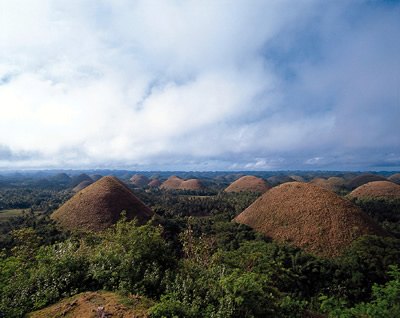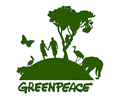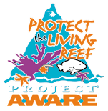Bohol
 The Island of Bohol is oval-shaped mainland surrounded with 73 smaller islands, having a gently rolling terrain, ideal for commercial and industrial site development. Bohol's mountainous interior is home to rare and endangered flora and fauna. At certain points, hills drop steeply to the coast from a maximum elevation of 870 meters above sea level.
The Island of Bohol is oval-shaped mainland surrounded with 73 smaller islands, having a gently rolling terrain, ideal for commercial and industrial site development. Bohol's mountainous interior is home to rare and endangered flora and fauna. At certain points, hills drop steeply to the coast from a maximum elevation of 870 meters above sea level.
The interior uplands are fit for agro-forestry and high value agricultural production. The central and northern lowlands have also fertile grounds and abundant water supply. Over a hundred caves have been identified, the biggest of which is found in the eastern part which makes Bohol ideal for spelunking adventures.
- More about scuba diving in Bohol
- Click here for the Bohol picture gallery
More Info about Bohol
From Wikipedia, the free encyclopedia
All text is available under the terms of the GNU Free Documentation License.
The Chocolate Hills in Carmen, Bohol are considered one of Philippine's natural wonders and Bohol is often referred to as the Jewel of the Philippines. They are hills made of limestone leftover from coral reefs during the ice age when the island was submerged. They turn brown during the summer, hence their name.
Most beaches are of white sand. The sand is often of such high quality that it is exported to other beaches in the world. The most well known of these beaches are in Panglao Island, and there, numerous islets have similar, yet untouched and pristine beaches.
River Cruise at Loboc
River Cruise at Loboc
The Loboc River is the most famous, running from the southeastern coast to the center of the island. It is famous for its River Cruise going up to its water source. The largest, Inabanga River, runs in the northern part of the province.
Numerous waterfalls and caves are scattered across the island, including the beautiful Mag-Aso falls in Antequera. Mag-Aso means smoke in the native tongue. The water is cool and often creates a mist in humid mornings which can hide the falls.
Panglao is a small island southwest of the main island, connected by a causeway to Tagbilaran.
Bohol is an island province in the Visayas. It lies southeast from Cebu across Bohol Strait and southwest from Leyte, separated by the Camotes Sea and Canigao Channel. Bohol is also located north of Mindanao with Bohol Sea between them. With a land area of 4117.3 km² and a coastline 261 km long, Bohol is the tenth largest island of the Philippines. The main island is surrounded by about 70 smaller islands, the largest of which are Panglao Island facing Tagbilaran City in the southwest and Lapinig Island in the northeast.
The terrain of Bohol is basically rolling and hilly and about half the island is covered in limestone. Near the outer areas of the island are low mountain ranges. The interior is a large plateau with irregular landforms.
Near Carmen can be found the major tourist draw of the province, the Chocolate Hills. The more than 1,200 uniformly cone-shaped limestone hills were named that way because in the summer, the grass growing on the hills turn brown, making the landscape look like it had chocolate mounds all over. The Chocolate Hills is found on the provincial seal of Bohol.
Panglao is famous for its diving locations and routinely listed as one of the top ten diving locations in the world. Numerous tourist resorts dot the southern beaches and cater to divers from around the world.
Climate
Unlike Luzon and the northern part of Visayas, Bohol is mostly unaffected by the numerous typhoons that hit the country. The weather is mostly mild all year round. When typhoons do hit the island, they usually cross quickly and are no longer powerful, their energy dissipated by the mountains in Leyte and Samar.
From November to April, the northeast monsoon (amihan) prevails. Except for a rare shower, this is the mildest time of the year. Daytime temperatures average 28°C, cooling down at night to around 25°C. The summer season from May to July brings higher temperatures and very humid days. From August to October is the southwest monsoon (habagat). The weather during this season is not very predictable, with weeks of calm weather alternating with rainy days. It can rain any day of the year, but you will have more chance for a heavy shower from November to January.















